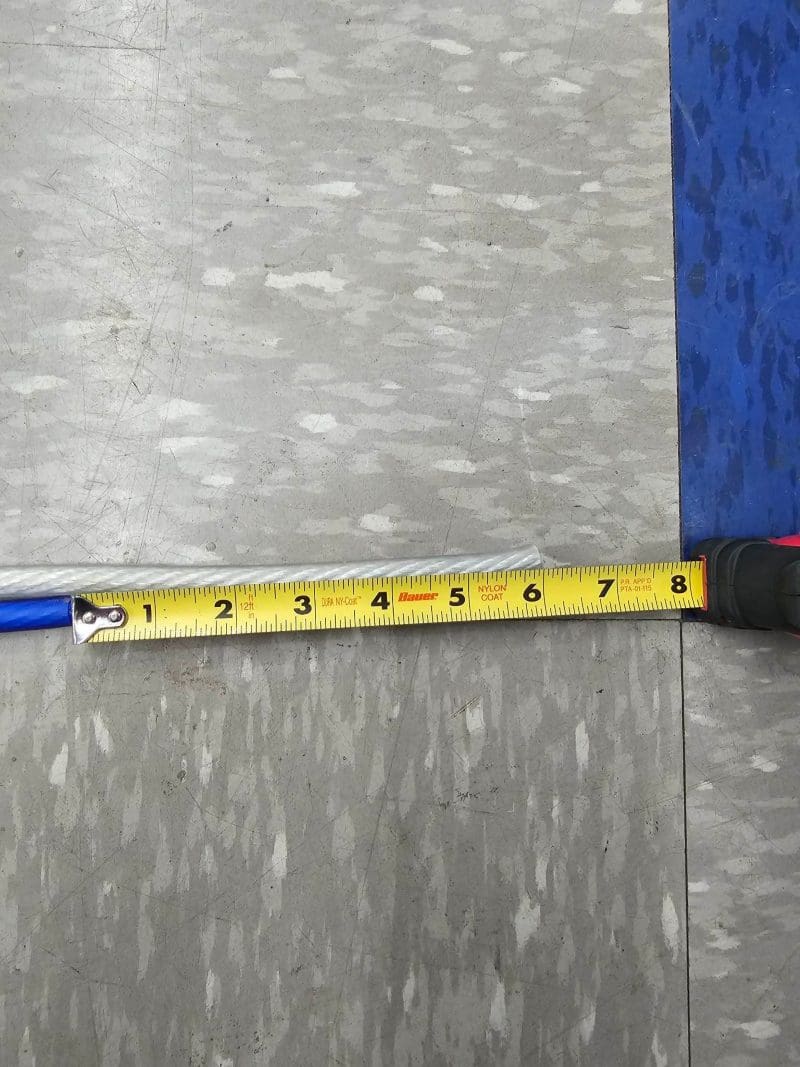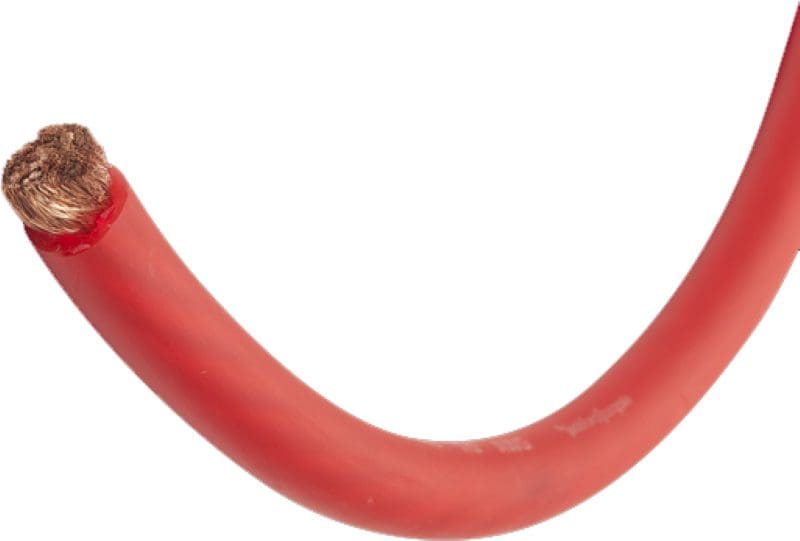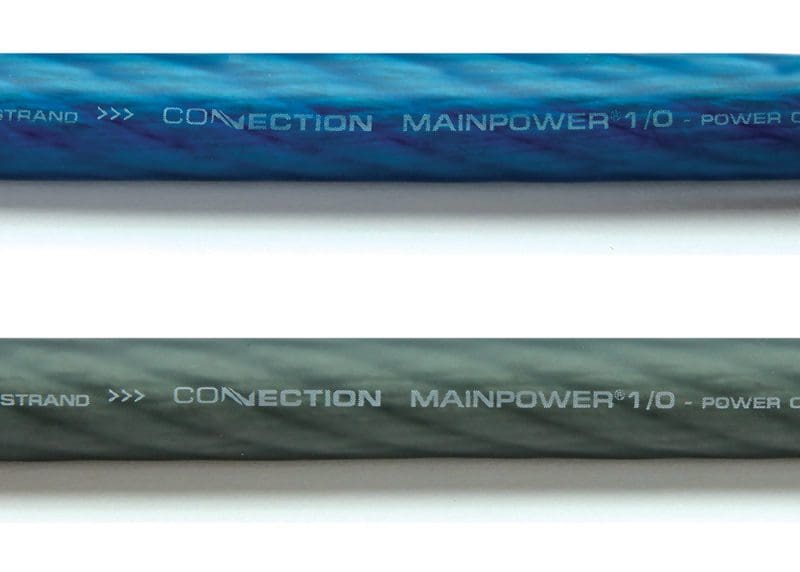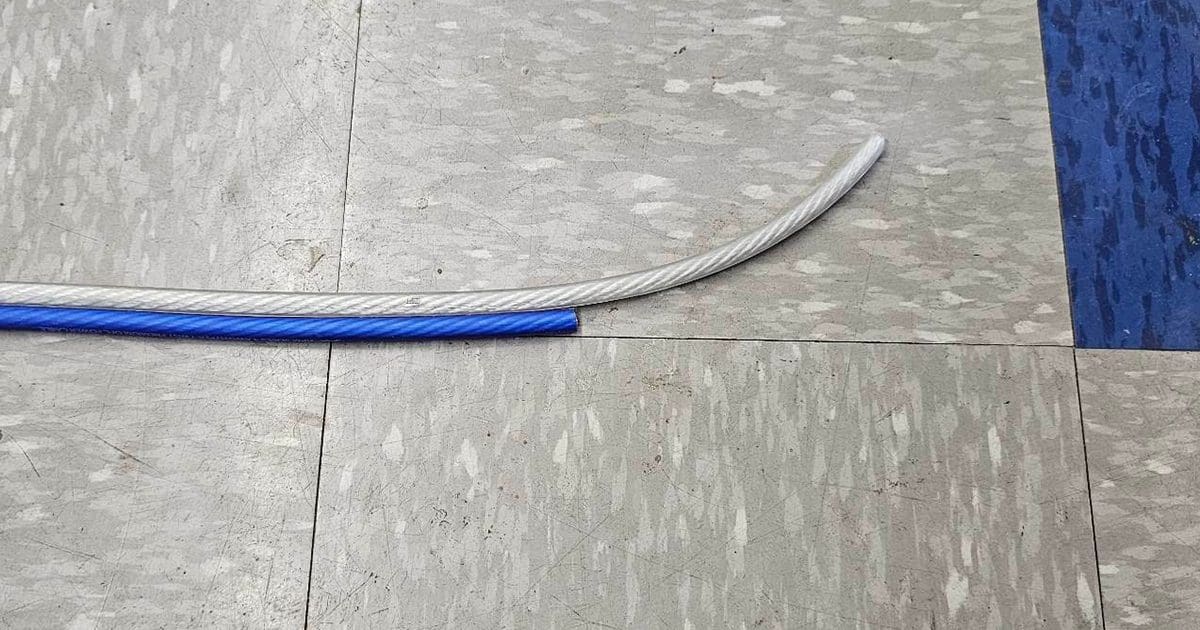You may not know it, but many wires and cables have information markings along their length. Many companies include length markings at 12-inch intervals. If you’ve ever purchased a spool or box of CAT5 network cable, you may even find that the markings include individual lengths so network technicians and installers can measure the start and end of an installation to bill their clients.
When Is a Foot Not 12 Inches?
We recently got a note from our friend TC Holliday from Nu Image Audio in Salina, Kansas. He was measuring some 4 AWG power wire for a client when he noticed something odd. He had pulled off two lengths that were supposed to be 17 feet in length and had used the markings on the wire to ensure that they were the same. However, when he went to coil them up to take them to the vehicle, he felt one was shorter. So TC laid the wire out on the showroom floor — and sure enough, the blue wire was 6 inches shorter than the silver.

How Are Wire Markings Applied?
The manufacturing of electrical conductors starts with the factory purchasing bulk rolls of copper or aluminum in what’s known as rod. The rod is drawn through a series of dies until it’s stretched to provide a specific diameter. Once the individual strands of wire are ready, they’re spun into small bundles using a stranding machine. For larger applications like car audio power wire, bundles are spun together. The wire is then drawn through an extrusion machine that coats the bundled wire in a PVC or polyethylene jacket. Next, the wire runs through a cold-water bath to ensure that the soft jacket has set properly. Finally, if the wire is to have a marker like a white stripe, it passes by a roller that is bathed in the appropriate paint color.
Labels can be applied in many ways. The two most common methods are via an inkjet print head or with a laser. In both instances, the speed at which the wire passes by the printing station determines the spacing between the markings on the wire. If the wire travels faster, the markings will be farther apart if the timing is constant. If the wire is traveling slowly, the markings may be closer together. Unless a dedicated speed-measuring device is associated with the printing process, the marker spacings may change over the length of a spool.


What You Need to Know About Buying Wire
I performed an in-depth test of 11 amplifier installation kits a decade ago. I measured everything imaginable, including jacket diameter, conductor diameter, weight, wire resistance and, yes, even the space between the markings on the wire itself. In the case of these kits, the label spacing varied between precisely 12 inches (on two of them) to as much as 13 inches. Averaging the data showed the markings at 12.375-inch spacings. Based on my experience, distance markings on wire and cable aren’t accurate.
Whether you’re having a shop install an amplifier and speakers in your car, or you need speaker wire to set up some home speakers in your living room, always ensure that a tape measure or calibrated markings on a bench are used to measure the length of the wire you’ve purchased.

